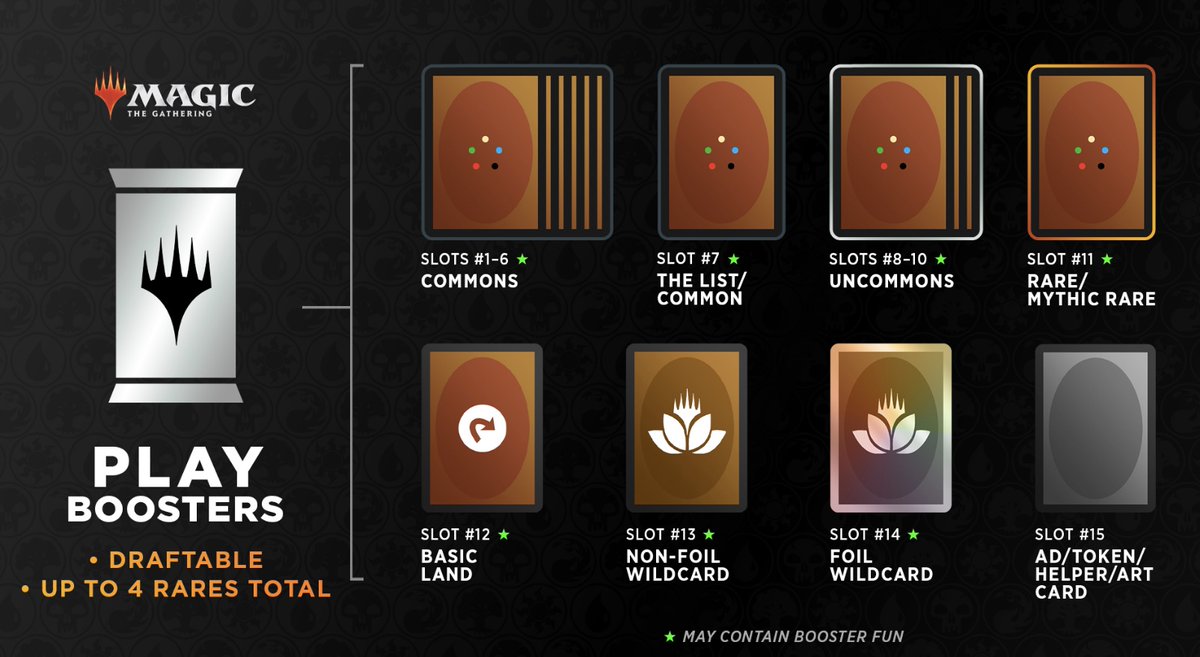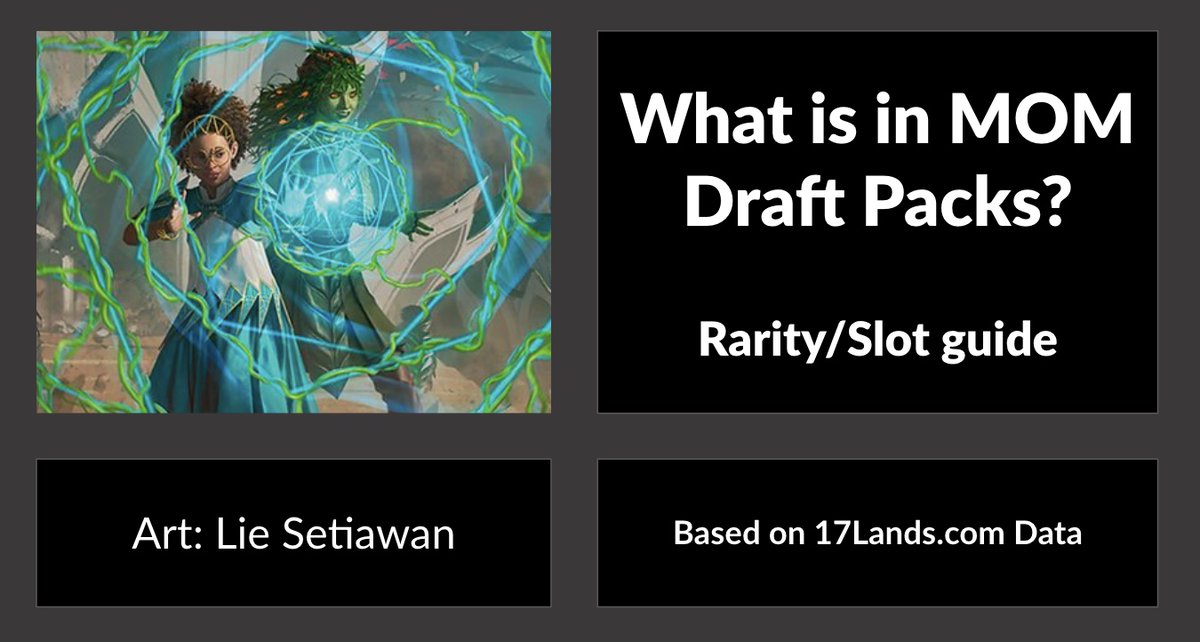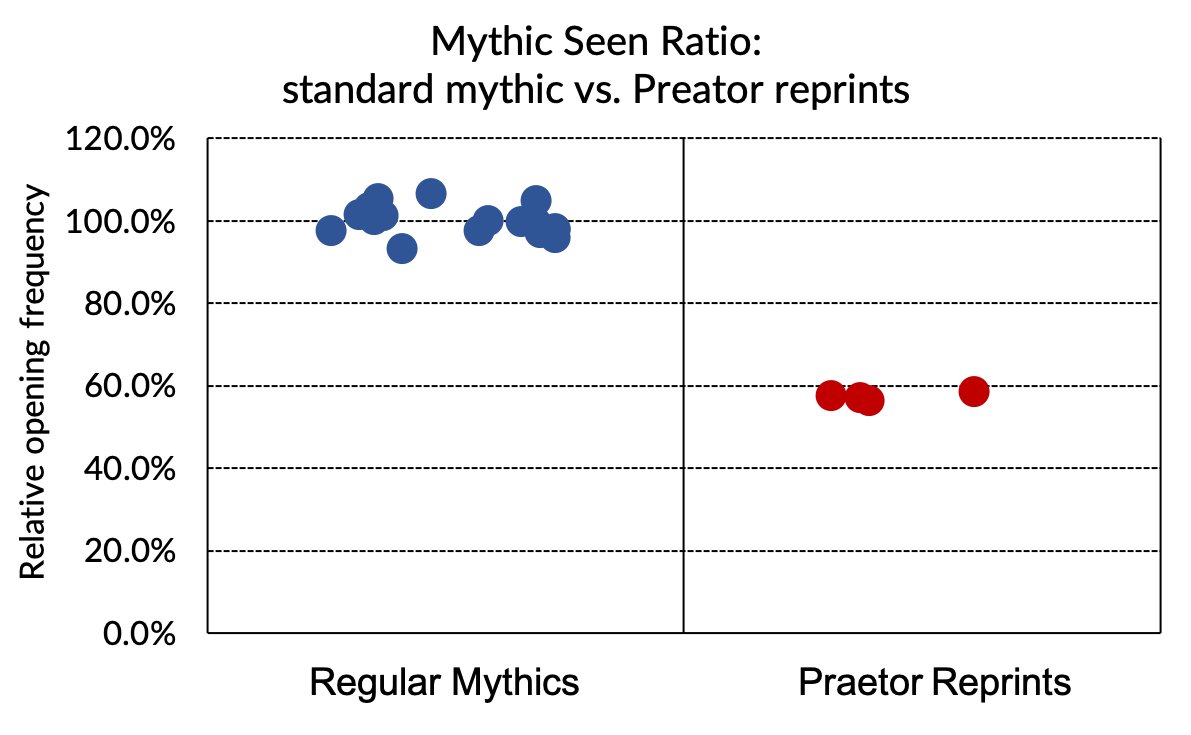WotC announced a new type of product that will combine Set Boosters and Draft Boosters. We don't have 100% info, but there is a significant chunk we do know. How will the new product impact draft? Not by much at first sight. 1/12 

Firstly, WotC focused on the fact that you could potentially open up to 4 rares in a pack. Yes, theoretically it is true. But realistically - it probably is a once several boxes experience. To look at it, we need to see what would need to happen. 2/12
One rare/mythic slot is a given. You also have the common/list slot. It is a regular common 87.5% of the time - 7 times per 8 packs. So on average in 3 packs per draft you will open something else. But even in those cases, you will still open mostly commons.
Why?
3/12
Why?
3/12
9.38% of the time you get a common/uncommon from The List there - assuming 2/3rd of the time it is a common - 6.25% you get a List common. 1.56% of the time (~1 per 3 draft pods worth of boosters) you get a rare/mythic List card. Same frequency you get a Special Guest card.
4/12
4/12
But Special Guest cards are also mainly at common. )f 40 special guests only 10 are R/M.
Based on those numbers, in this slot you will get some sort of a common ~94% of the time, uncommon ~4% of the time and a rare/mythic ~2% of the time. So practically you get a common. 5/12
Based on those numbers, in this slot you will get some sort of a common ~94% of the time, uncommon ~4% of the time and a rare/mythic ~2% of the time. So practically you get a common. 5/12
You will also get a foil and non-foil wild card slot - slot with a random rarity card. My guess, because that slot is not specified in the WotC article, is it will be 75% common, 20% uncommon and 5% rare. Guesswork, but would be shocked if that proportion is very different. 6/12
I assume on Arena we will just get 2x regular wild card slots instead due to the lack of foils. This is actually good, as the foil slot was the big difference between Arena and paper and that will now be most likely eliminated thanks to that change. 7/12
To finish the tally, we have 6 common and 3 uncommon slots. So, keeping in ming I had to guestimate some of the proportions, we end up with this average pack composition:
And looking through replies to my previous tweets it struck me - I've seen similar numbers before! 8/12
And looking through replies to my previous tweets it struck me - I've seen similar numbers before! 8/12

@RevilFox was spot on. MOM was almost certainly a pilot version of the new strategy. And I don't remember crying that MOM was unplayable or that sealed in MOM was too busted. Here is the anatomy of MOM pack I did then: 9/12 

@RevilFox Keeping in mind I made some necessary estimates for the Play Pack, they look comparable with MOM packs (they had 1 extra uncommon). This increases my faith in my guesstimates. And hopefully will keep you reassured the change doesn't mean the end of draft as we know it. 10/12




@RevilFox But what about the sealed? It surely isn't great to have packs with 4 rares in them? Maybe it's not. But think about the frequency of those. Based on my estimates - 1 pack in 20000 will have 4 rares. Not something that will impact games regularly enough to care about it. 11/12
@RevilFox If one thing worries me with Play Packs it's not the draft, it's the price. Are PP worth the price increase? I will be certainly monitoring it, so watch this space when Karlov Manor hits Arena. As soon as I can I'll prepare the breakdown of pack contents with exact numbers. 12/12
• • •
Missing some Tweet in this thread? You can try to
force a refresh

 Read on Twitter
Read on Twitter













